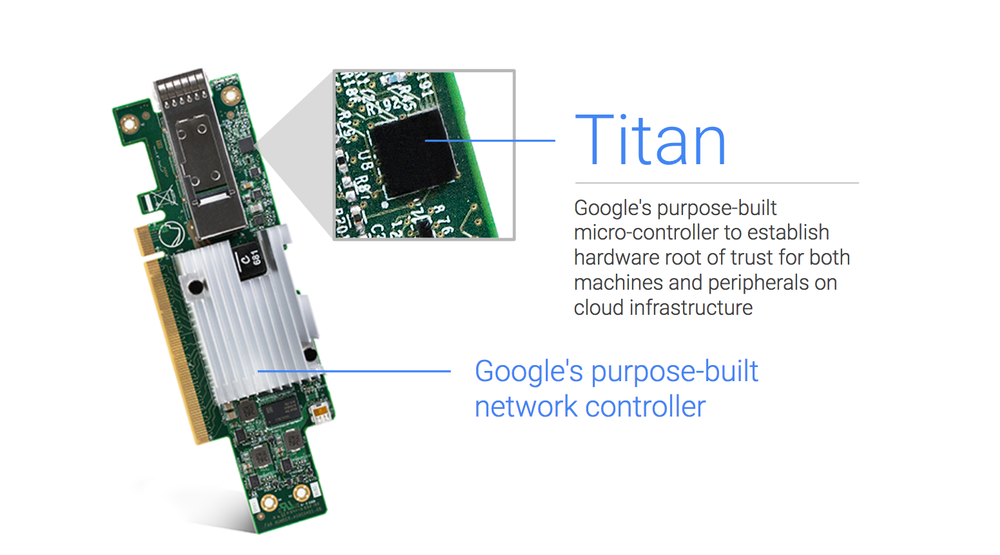
I listened to a podcast and cut out the chit-chat, so you don’t have to:
Titan is a tiny security co-processing chip used for encryption, authentication of hardware, authentication of services.
Purpose
Every piece of hardware in google’s infrastructure can be individually identified and cryptographically verified, and any service using it mutually authenticates to that hardware. This includes servers, networking cards, switches: everything. The Titan chip is one of the ways to accomplish that.
The chip certifies that hardware is in a trusted good state. If this verification fails, the hardware will not boot, and will be replaced.
Every time a new bios is pushed, Titan checks that the code is authentic Google code before allowing it to be installed. It then checks each time that code is booted that it is authentic, before allowing boot to continue.
‘similar in theory to the u2f security keys, everything should have identity, hardware and software. Everything’s identity is checked all the time.’
Suggestions that it plays important role in hardware level data encryption, key management systems, etc.
Hardware
Each chip is fused with a unique identifier. Done sequentially, so can verify it’s part of inventory sequence.
Three main functions: RNG, crypto engine, and monotonic counter. First two are self-explanatory. Monotonic counter to protect against replay attacks, and make logs tamper evident.
Sits between ROM and RAM, to provide signature valididation of the first 8KB of BIOS on installation and boot up.
Production
Produced entirely within google. Design and process to ensure provenance. Have used other vendor’s security coprocessors in the past, but want to ensure they understand/know the whole truth.
Google folks unaware of any other cloud that uses TPMs, etc to verify every piece of hardware and software running on it.
